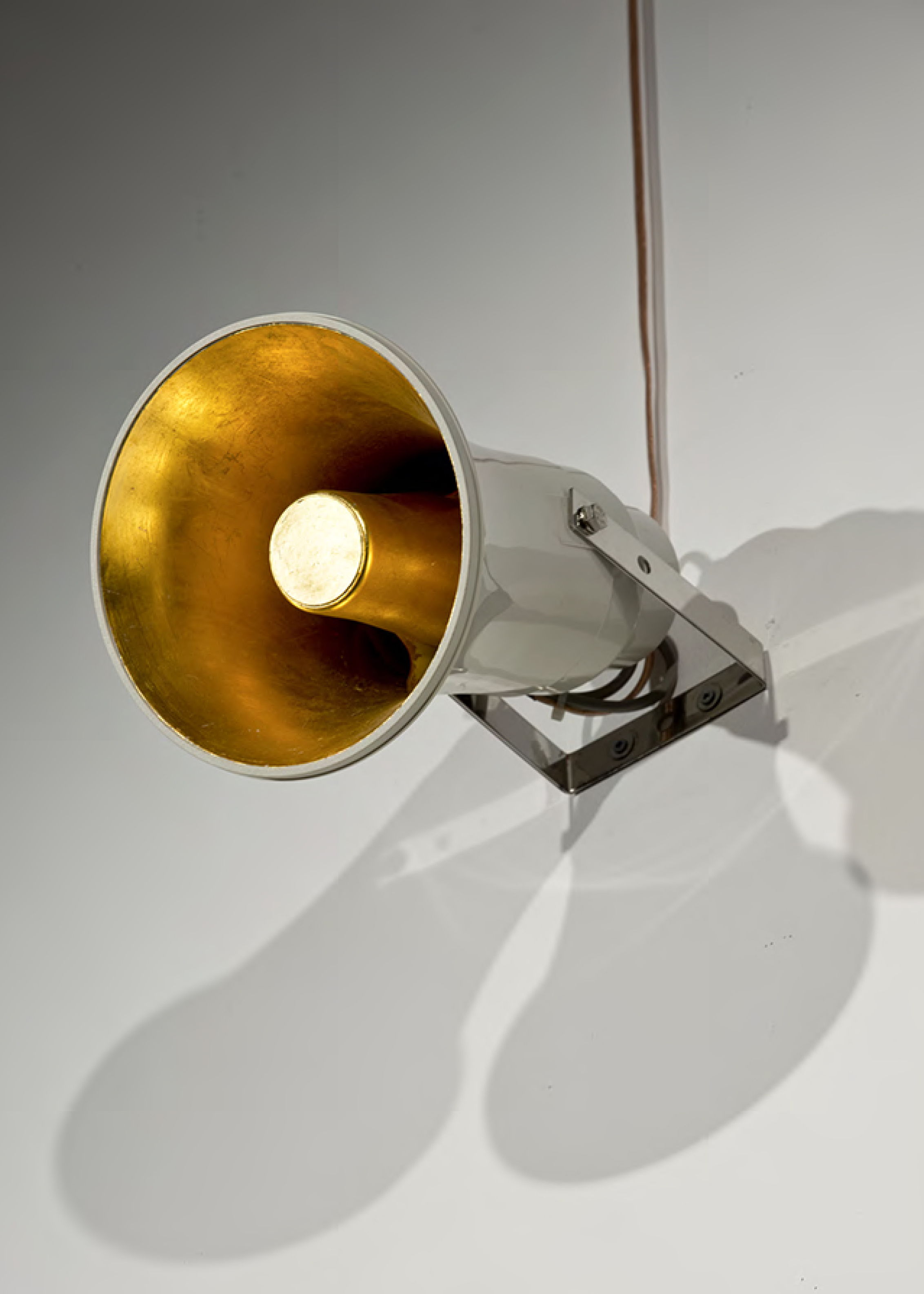The Return
Audio, megaphone, gold, 2011. 90 seconds repeating at irregular intervals.Vienna Boys' Choir treble Beni Klocker sings a vocal interpretation of an air raid siren, broadcast from a gilded megaphone. The Return has been exhibited under a bridge in Maastricht, in a city square in Vienna, on a clocktower in Marl, as a doorbell in Toronto, as well as in more traditional gallery settings. The Return is part of the permanent collection of the National Gallery of Canada. Critical writing about The Return includes “A lily is a lily is a lily is a lily...?”, an essay by sound scholar Dariusz Brzostek; “Coming After,” a catalogue essay by curator Jon Davies; and “Les Condamnés à (la) Mort: Donner Voix aux Archives”, an essay by art historian Maël Forlini.


